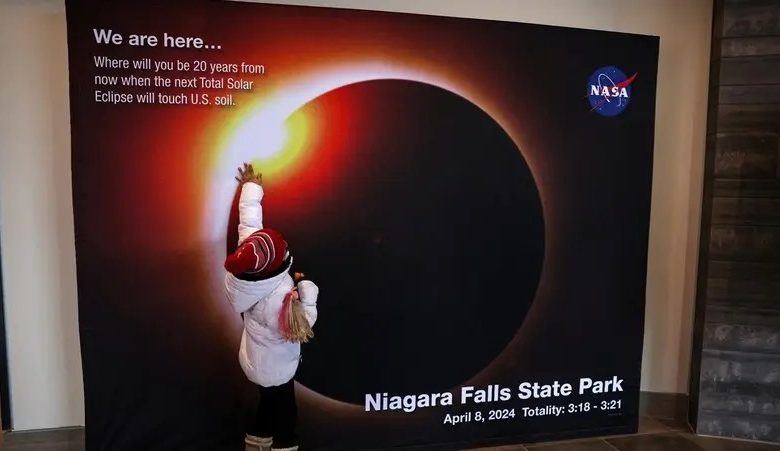Solar Eclipse: Unprotected Gazing Can Damage Vision

Just a single, unguarded glance at a solar eclipse can result in a lifetime of vision loss, eye health experts warn.
On Monday, tens of millions of spectators across Mexico, the United States and Canada will witness the Moon completely obscure the Sun’s light, a rare celestial spectacle that won’t be visible for most of North America again until 2044.
Medical literature is teeming with examples of people who suffered damage to their retinas — the layer of light-sensitive tissue at the back of the eye — and health professionals are offering advice on how to avoid becoming the next cautionary tale.
Aaron Zimmerman, a clinical professor of optometry at the Ohio State University, told AFP that the dangers of sungazing during eclipses were discussed by the ancient Greek philosopher Socrates, but it wasn’t until recently that science really caught up with how eye injury happened.
When it comes to eclipses, he explained, the main damage comes from “photochemical toxicity,” where short, high-energy wavelengths of light — blues, violets and non-visible ultraviolets — trigger chemical reactions that damage the rods and cones of the retina.
Cue visits to the emergency department by people with complaints of blurry vision, changes in color perception, and blind spots, with the outlook for recovery far from certain.
Human beings inherently look away from the Sun because of the discomfort it causes, but during eclipses “you can psychologically override” that instinct, explained Zimmerman.
A famous journal report about the 2017 US solar eclipse involved a woman in her twenties who presented to the New York Eye and Ear Infirmary after looking at the solar rim “several times for approximately 6 seconds without protective glasses” and then later with eclipse glasses.
Hours later, objects started to look fuzzy and out of shape, colors became distorted, and she developed a central black spot in her left eye.
An advanced imaging technique was able to show the damage at the cellular level which persisted on her follow up six weeks later.



